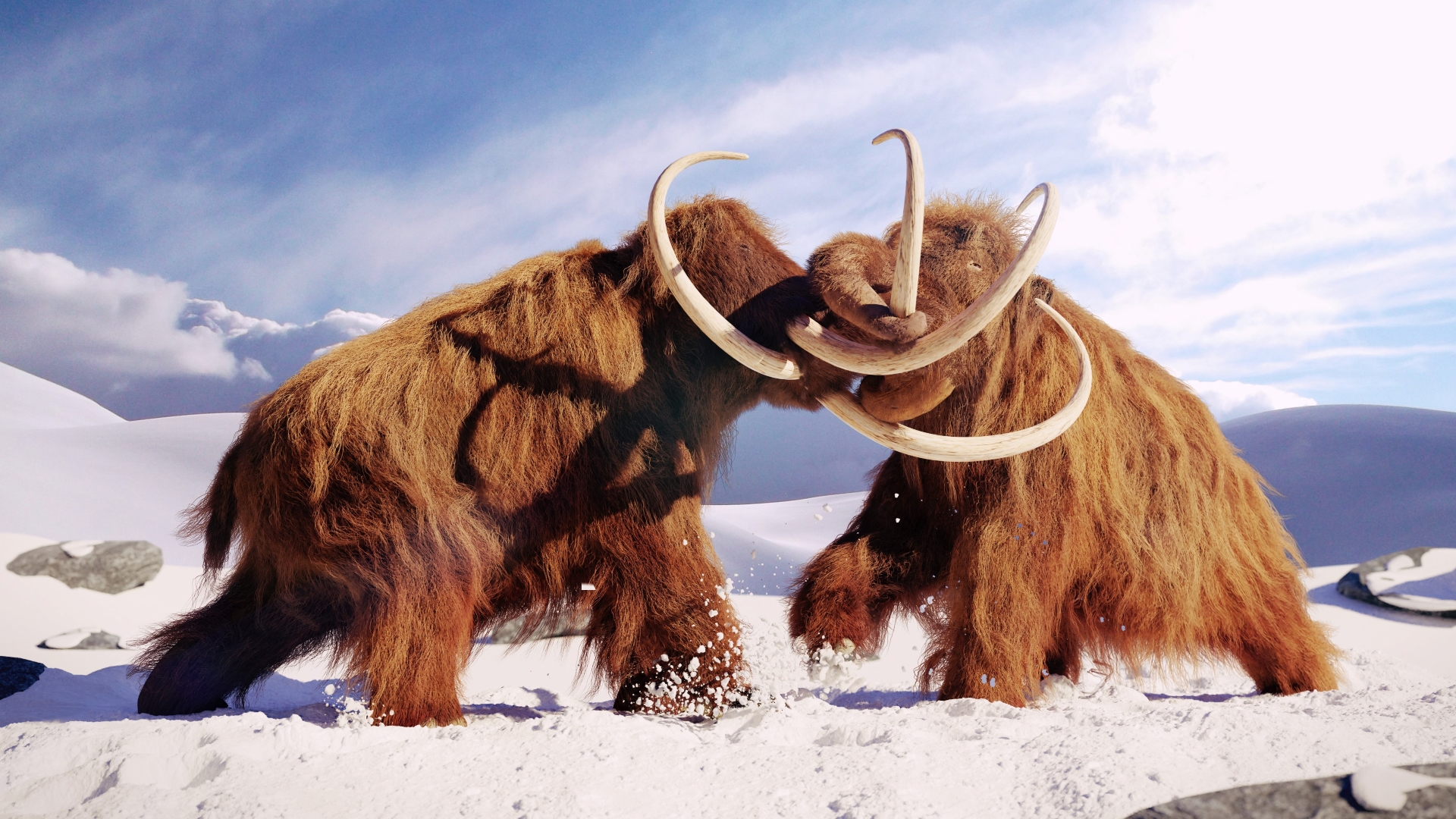
Male woolly mammoths turned into sex fiends when in heat, just like modern elephants do, a new study of ancient hormones preserved in the tusks of the extinct giants has revealed.
By charting the annual surges of testosterone in a 33,000-year-old mammoth tusk, researchers have discovered that mammoths underwent musth. The word, which means "drunk" in its original Persian, is a months-long period of heightened sexual activity and aggression towards rivals experienced by modern male elephants. During musth, a male elephant's testosterone can soar to up to 60 times its natural levels.
"Tusks hold particular promise for reconstructing aspects of mammoth life history because they preserve a record of growth in layers of dentin that form throughout an individual's life," study co-author Daniel Fisher, a paleontologist at the University of Michigan, said in a statement.
Related: Woolly mammoths weren't always shaggy. Here's when they evolved some of their trademark features.
Dentine, the hardest tissue in mammalian bodies besides enamel, is a type of tooth tissue that forms the majority of an elephant's tusk. After being deposited at the tusk's base in the form of a cone-shaped packet, the dentine grows outward over an elephant's life, joining with previous dentine packets to elongate the tusk in a series of tree-like concentric rings. Hormones are deposited along those rings, giving researchers a year-by-year record of the animals' lives.
Paleontologists have long thought that mammoths underwent musth. To confirm their hypothesis, they analyze the testosterone levels found in three tusks: two from adult mammoths and another from an adult African bull elephant. The bull elephant tusk was taken from a male killed by a hunter in Botswana in 1963, and the mammoth tusks belonged to a female and a male — the first, around 5,700 years old, was found on Wrangel Island, Russia, and the second is roughly 37,000 years old and was unearthed in a Siberian diamond mine in 2007.
By measuring testosterone levels in both pulverized samples of tusk tissue, and in CT scans of the intact tusks, the paleontologists found that both the male bull elephant and the male mammoth experienced massive seasonal spikes in testosterone levels — rising to 20 times higher than baseline in the elephant and 10 times higher in the mammoth. This strongly suggests male mammoths experienced musth and the behavioral changes that go with it.
The team now plans to use their technique to study fluctuations of other hormones, giving them a unique window into the lives of mammoths. And they say that their technique needn't stop with these particular shaggy beasts.
"These methods could be used to investigate records of organisms with smaller teeth, including humans and other hominids," the researchers wrote in the study. "Endocrine records in modern and ancient dentin provide a new approach to investigating reproductive ecology, life history, population dynamics, disease, and behavior in modern and prehistoric contexts."
The researchers published their findings on May 3. in the journal Nature.







